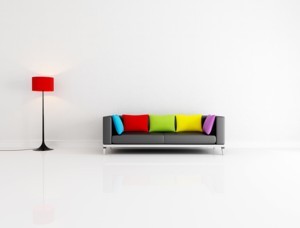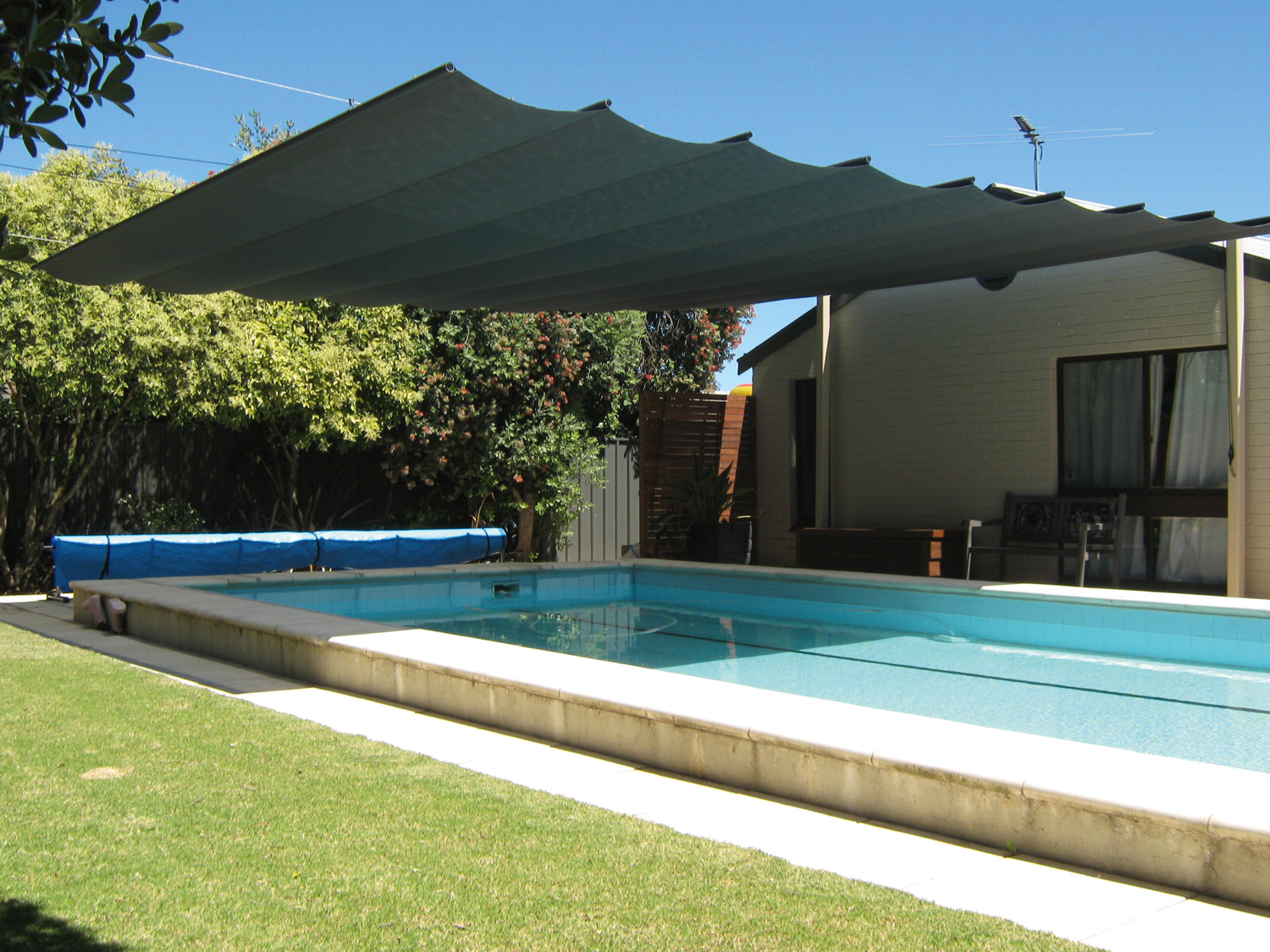
by Shannon Lush and Jennifer Fleming
With all the effort that goes into renovating a home, it makes sense you’d want to create one that is practical, comfortable and easy to maintain. The exceptionally successful authors and Australia’s very own Clean Queens — Shannon Lush and Jennifer Fleming — give us the lowdown on some of the best ways to create, and maintain, a comfy home in this exclusive excerpt from their latest book, HOW TO BE COMFY.
The book is chock full of fabulous information, from (as you would expect) cleaning tips to practical advice on how to plan your living spaces, what colours work and the best storage solutions. There are even some ‘comfort-inducing’ recipes. In other words, this book provides tips on how to really turn a house into a home. Here we’ve included a few basic starting points for renovators, but to really get the whole story, buy the book!
Outside the front door
This part of your home should look clean and inviting, but also reflect the household’s personality. Remember, first impressions are lasting. Here are some comfy considerations:
* Check the state of your gate, front fence, letterbox and house number.
* Can you easily navigate your way to the front door? Can people easily identify where the front door is? There’s nothing worse than wandering around a house looking for the entrance.
Inside the front door
This area is the threshold between the outside world and your inner sanctum. When you walk in the front door you want to get the ‘I’m home’ feeling. Comfy considerations include:
* If this is the place where you dump the day’s paraphernalia, make sure you have the space for it.
* If you store coats, hats and shoes here, have appropriate spots for them.
Hallways
Think of hallways around the house as arteries. If the blood can’t flow, it can’t get into the muscles of the room. Make sure the entrance hallway is clear because it’s a throughway. Doorways leading off the hallway should be easy to get to, open and close.
THE LOUNGE, FAMILY, DINING ROOM AND STUDY
Getting organised
The best way to get organised is to work out the optimal layout for your lounge/family room by creating a floorplan. Place the largest pieces of furniture against the longest wall, and don’t locate big or tall items near doorways or you’ll create a crowded look. Instead, place them near corners.
Walls
Choosing colours and finishes for walls is subjective and they need to be right for you. When it comes to paint, the higher the sheen, the less likely the wall will mark, but be aware that it also reflects light and will show up imperfections. High-sheen paints are a good choice if you have children and pets. Paint effects, such as rag rolling and marbling, hide marks better than a plain surface. Matt surfaces can develop sheen when washed so avoid having them in high traffic areas.
Wallpaper is great if you need to cover an uneven surface, but the downside is that it tends to date very quickly. Look at designs with a multi mirror (at wallpaper suppliers). That way you can see how an entire wall will look rather than just one square. Make sure wallpaper in children’s rooms has a vinyl finish that is washable.
Lighting
It’s important to vary lighting in the lounge/family room according to the room’s function. You need bright lights for reading but dimmer when watching TV. If you don’t have enough light, activities such as reading and sewing can become stressful. Table and floor lamps are a good option, as are dimmers installed on your lights. For relaxing lighting, use lamps with soft bulbs to create a rosy or golden glow, giving the effect of a sunset. For bright lighting, use blue-white light which wakes you up. Many hardware stores and supermarkets now sell bulbs with a range of tints.
Flooring
It’s worth spending money on flooring because you’ll live with it for a long time. The options are almost overwhelming, with timber, vinyl, concrete, tiles, marble, slate, self-levelling plastics and rubber the most popular styles. Alternate floor coverings include carpet, vinyl, silk, rubber, coir and sisal.
How to choose flooring
What to choose will depend on where you live, how you live and your preferences. Timber floors are easy to clean but can be noisy. Rugs, runners or polypropylene transparent runners can reduce noise levels. Heavy furniture near the walkway also lowers vibrations in the floor and stops echoing.
Carpet is warmer and quieter but stains more easily and wears out after about 20 years. Whatever you do, don’t choose something over-patterned that will date; go for classic colours and styles. Where you can be bold is with the choice of rugs. These are great because they protect carpet, delineate a space and provide decoration. In zones where kids play, a rug is an extra layer of padding and can be washed easily.
Tiles are easy to look after but can be cold and harsh.
KITCHENS
Getting organised
To make the most efficient use of space in your kitchen, store items near where they are used. Put the chopping board between your sink and oven and keep the aluminium foil and plastic wrap between the oven and the fridge. If there’s more than one cook in the kitchen at a time, make sure there’s enough work space. The kitchen is an explosion for your senses — sight touch, smell, sound and taste are all utilised in this room and need to be considered when organising your kitchen.
BEDROOMS
Colour
Your bedroom colour has huge bearing on its comfort factor. Pale colours tend to work best, whereas muddy colours can make the walls look dirty. As a rule, avoid dark colours because they can make you feel depressed. Dark green can make you feel sleepy (you may not always want to be asleep in your bedroom) and red makes you hungry, which is why it is popular in fast-food outlets.
The best way to find out what colour works for you is to spend time in rooms of different colours and shades to see how you feel. When it comes to sheets and bedspreads, choose contrasting colours to the walls. The bed should be the focal point of the room but it shouldn’t disappear into the walls.
Wardrobes
Wardrobes may be built in, freestanding or open hanging and need to be ordered and sorted. If you have a small room, consider installing built-in wardrobes; they maximise storage space and if you opt for a mirrored door, it has a dual function of showing you how you look and making the room seem larger. Make sure the depth of the wardrobe is at least 3-4cm deeper than the width of a coat hanger.
BATHROOM
Every bathroom has bits and bobs. The challenge is having all essentials close at hand but in an organised way. You could sort out the vanity by allocating one shelf to each member of the family. Encourage users to place their items in one spot only; that way you won’t spend time searching for what you need.
LAUNDRY
Many laundries are designed by people who don’t use them, which is why they often consist of a washing machine and dryer behind a cupboard door. How are you supposed to fold clothes in a cupboard? If you have a choice, opt for a good-size laundry that is airy, has a sink, lots of benchspace for baskets, easy-to-clean surfaces and good lighting.
Ideally you want space for spot removal, washing, drying, sorting, folding and ironing. Because there’s a lot of lifting and bending in this room, a small table and chair or a stool will make it more comfortable. An efficient laundry keeps the rest of the house clean because you’re not transferring fluff around the house.
Storage
If you don’t have a cupboard in the laundry, invest in a set of shelves on wheels to store detergent, stain-removal products, pegs and iron. This will also provide storage and an extra work surface. If you have a very space-challenged laundry, attach some hooks or a shower- or laundry-tidy to the back of the door to store items.


